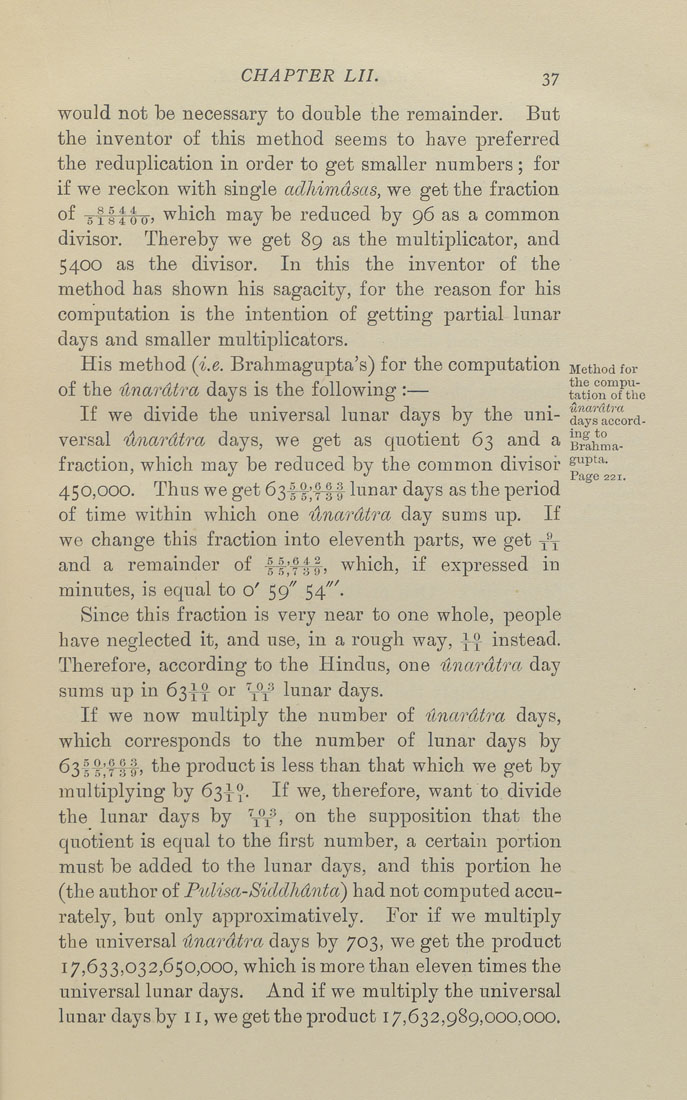CHAPTER LII. 37
would not be necessary to double the remainder. But
the inventor of this method seems to have jDreferred
the reduplication in order to get smaller numbers; for
if we reckon with single adhimdsas, we get the fraction
of -g-fff^, which may be reduced by 96 as a common
divisor. Thereby we get 89 as the multiplicator, and
5400 as the divisor. In this the inventor of the
method has shown his sagacity, for the reason for his
computation is the intention of getting partial lunar
days and smaller multiplicators.
His method (i.e. Brahmagupta's) for the computation Method for
of the Unardtra days is the following :— ta\lon™f^t^i'o
If we divide the universal lunar days by the uni- daysaocord-
versal ilnardtra days, we get as quotient 63 and a ^rihma-
fraction, which mav be reduced bv the common divisor s^p"^^-
•^ "^ . Page 221.
450,000. Thus we get 634|;ff f lunar days as the period
of time within which one unardtra day sums up. If
we change this fraction into eleventh parts, we get y\
and a remainder of f|-;-f ^4, which, if expressed in
minutes, is equal to o' 59" 54"'.
Since this fraction is very near to one whole, people
have neglected it, and use, in a rough way, -|[-J instead.
Therefore, according to the Hindus, one unardtra day
sums up in 63^^ or '^^^ lunar days.
If we now multiply the number of unardtra days,
which corresponds to the number of lunar days by
63lf,'fff) tihe product is less than that which we get by
multiplying by 63^°. If we, therefore, want to divide
the lunar days by ''^-{', on the supposition that the
quotient is equal to the first number, a certain portion
must be added to the lunar days, and this portion he
(the author of Pulisa-Siddhdnta) had not computed accu¬
rately, but only approximatively. For if we multiply
the universal unardtra days by 703, we get the product
17,633,032,650,000, which is more than eleven times the
universal lunar days. And if we multiply the universal
lunar days by 11, we get the product 17,632,989,000,000.
|








